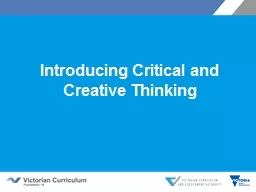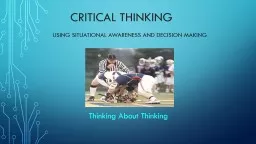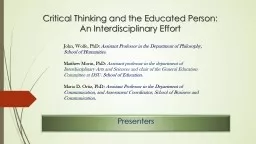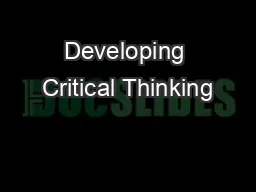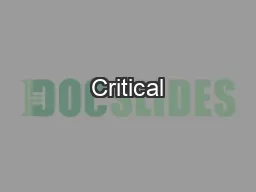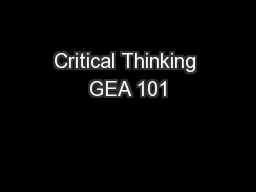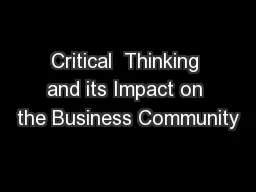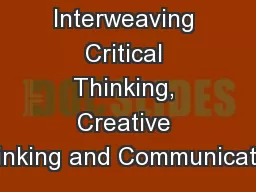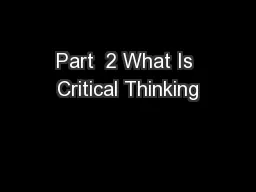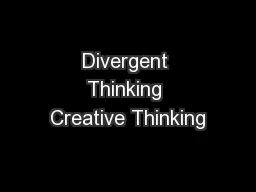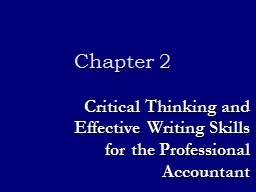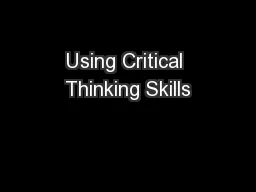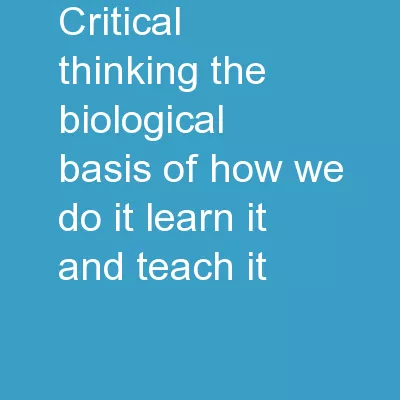PPT-Introducing Critical and Creative Thinking
Author : pasty-toler | Published Date : 2017-04-05
Agenda The importance of Critical and Creative Thinking What is in the curriculum Questions Planning for implementation Relationship to other curriculum areas Progressing
Presentation Embed Code
Download Presentation
Download Presentation The PPT/PDF document "Introducing Critical and Creative Thinki..." is the property of its rightful owner. Permission is granted to download and print the materials on this website for personal, non-commercial use only, and to display it on your personal computer provided you do not modify the materials and that you retain all copyright notices contained in the materials. By downloading content from our website, you accept the terms of this agreement.
Introducing Critical and Creative Thinking: Transcript
Download Rules Of Document
"Introducing Critical and Creative Thinking"The content belongs to its owner. You may download and print it for personal use, without modification, and keep all copyright notices. By downloading, you agree to these terms.
Related Documents

